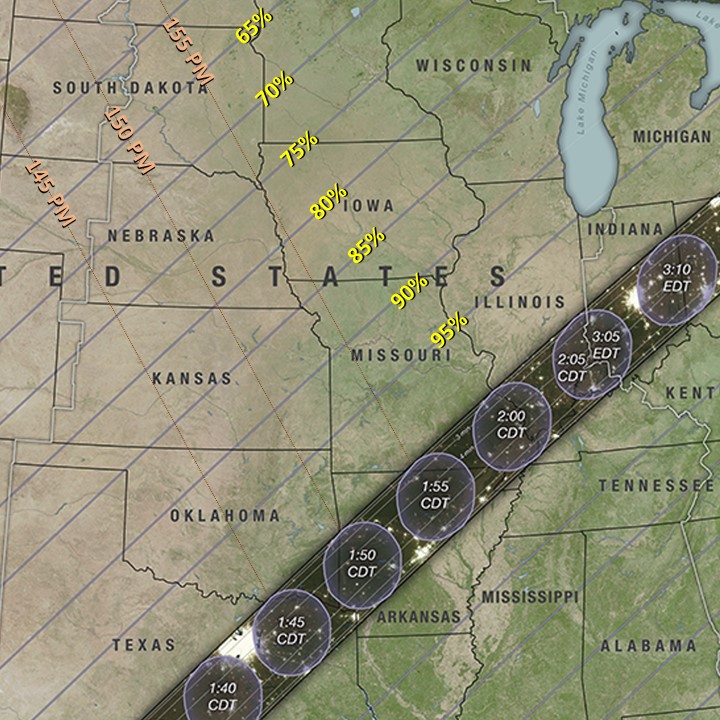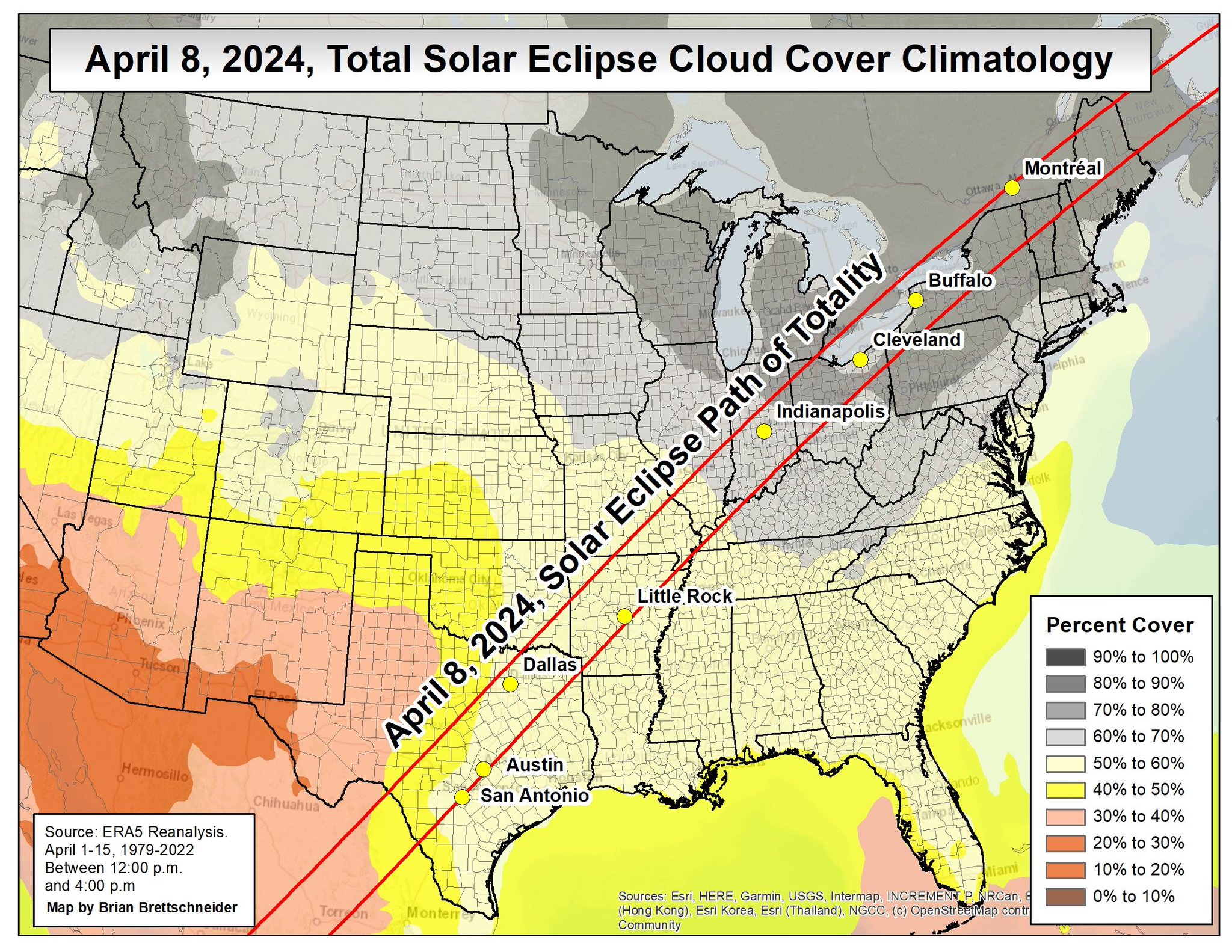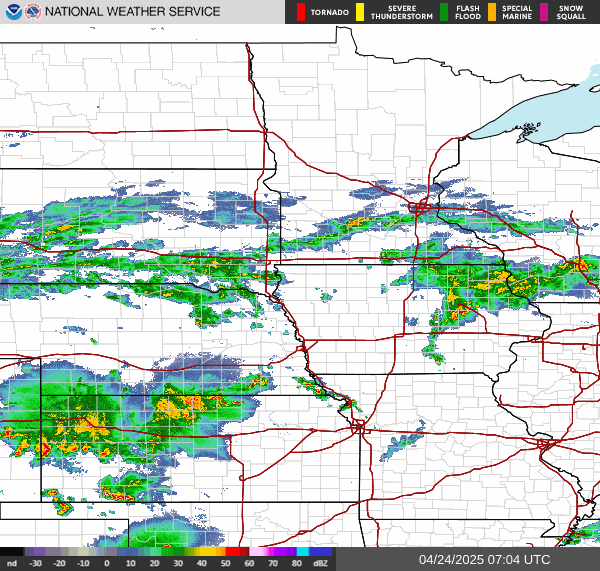2024 Solar Eclipse Countdown:
A total solar eclipse will occur on April 8th, 2024. It will be the last total solar eclipse visible from the United States until 2044. While the path of totality will be south of our local area, we should still experience 70 to 85 percent of the eclipse in eastern Nebraska and southwest Iowa (depending on location). Lincoln and Omaha are right along the 80% totality line. The eclipse will begin for us around 1240 pm, the peak of the eclipse will occur from around 150 pm CDT through 200 pm CDT, and the eclipse ends around 310 pm. Safety is the number 1 priority when viewing a total solar eclipse. Make sure you have the proper eyewear if you intend to view the eclipse.

Map courtesy NASA Scientific Visualization Studio
Eclipse Data For Our Area (all times in CDT) | Compute Times for Your Location
| Location | Eclipse Begins | Eclipse Peak | Eclipse Ends | Duration | Obscuration |
| Omaha, NE | 12:40:04 PM | 1:55:07 PM | 3:09:57 PM | 2h 29 m | 79.9% |
| Lincoln, NE | 12:38:23 PM | 1:53:37 PM | 3:08:43 PM | 2h 30m | 79.9% |
| Norfolk, NE | 12:39:59 PM | 1:53:57 PM | 3:07:56 PM | 2h 27m | 74.8% |
| Falls City, NE | 12:38:18 PM | 1:54:18 PM | 3:10:05 PM | 2h 31m | 84.3% |
| Harlan, IA | 12:41:32 PM | 1:56:29 PM | 3:11:05 PM | 2h 29m | 80.1% |
| Red Oak, IA | 12:40:28 PM | 1:55:55 PM | 3:11:02 PM | 2h 30m | 82.2% |
Cloud Cover Climatology 1-5 PM CDT April 8th

Eclipse FAQs
What can people expect during the eclipse?
During the eclipse, the sky will get dark as if it were dawn or dusk. Even if skies are cloudy, people will still notice a darkening of the sky. Nocturnal wildlife may awaken while non-nocturnal wildlife may think it’s time for bed.
What safety precautions should be taken to view the eclipse?
When watching the partial phases of the solar eclipse, which happens before and after totality, you must look through safe solar viewing glasses (“eclipse glasses”) or a safe handheld solar viewer. It is not safe to look at the partially eclipsed sun through a camera lens, telescope, binoculars, sunglasses, or any other optical device even while wearing eclipse glasses, as the concentrated solar rays will burn through the filter and cause serious eye injury.
What effects might the eclipse have on the weather?
Research has shown that temperatures can drop between 4-10 degrees Fahrenheit during the eclipse, depending on totality of coverage. In addition, some reduction in wind speed and low-level clouds are possible.
What was the last total solar eclipse in Nebraska or Iowa?
The last total solar eclipse in our area was August 21, 2017.
When will the next total solar eclipse occur in the contiguous United States?
The next total solar eclipse will not occur in the United States until on August 23, 2044.
Additional Links
Weather Data
Choose a forecast product type (temperature, wind, cloud cover, etc) and desired time from the menu/slider bars at the top of the map. The map will update automatically. Use your mouse to zoom into/pan around on the map. Click anywhere in the map to bring up forecast links for that point.
Central US GeoColor Satellite |
Central US Radar |